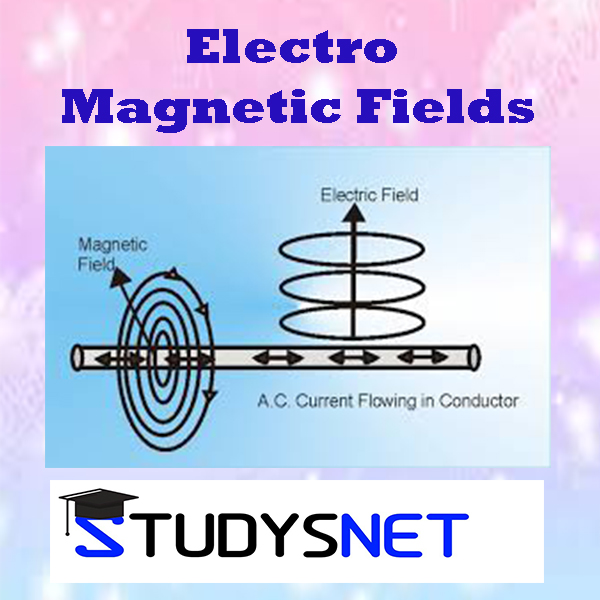Electro Magnetic Fields free videos and free material uploaded by Ramanjaneyulu K .
Preamble:
Electromagnetic fields are the pre-requisite for most of the subjects in the gamut of electrical engineering. The study of this subject enables students to understand and interpret the phenomenon pertinent to electrical engineering using microscopic quantities such as electric and magnetic field intensities, scalar and vector potentials.
Learning objectives:
• To study the production of electric field and potentials due to different configurations of static charges.
• To study the properties of conductors and dielectrics, calculate the capacitance of various configurations and understand the concept of conduction and convection current densities.
• To study the magnetic fields produced by currents in different configurations, application of ampere’s law and the Maxwell’s second and third equations.
• To study the magnetic force and torque through Lorentz force equation in magnetic field environment like conductors and other current loops.
• To develop the concept of self and mutual inductances and the energy stored.
• To study time varying and Maxwell’s equations in different forms and Maxwell’s fourth equation for the induced e.m.f.
UNIT – I
Electrostatics: Electrostatic Fields – Coulomb’s Law – Electric Field Intensity (EFI) – EFI due to a line and a surface charge – Work done in moving a point charge in an electrostatic field – Electric Potential – Properties of potential function – Potential gradient – Guass’s law –– Maxwell’s first law, div( D )=ρv Laplace’s and Poison’s equations and Solution of Laplace’s equation in one variable.
UNIT – II
Conductors – Dielectrics and Capacitance: Electric dipole – Dipole moment – potential and EFI due to an electric dipole – Torque on an Electric dipole in an electric field – Behaviour of conductors in an electric field – Conductors and Insulators Polarization – Boundary conditions between conduction to Dielectric and dielectric to dielectrics capacitance – capacitance of parallel plates, spherical and coaxial cables with composite dielectrics –Energy stored and energy density in a static electric field – Current density – conduction and Convection current densities – Ohm’s law in point form – Equation of continuity
UNIT – III
Magneto statics and Ampere’s Law: Static magnetic fields – Biot-Savart’s law – Oesterd’s experiment - Magnetic field intensity (MFI) – MFI due to a straight current carrying filament – MFI due to circular, square and solenoid current – Carrying wire – Relation between magnetic flux, magnetic flux density and MFI – Maxwell’s second Equation, div(B)=0 –Ampere’s circuital law and its applications viz. MFI due to an infinite sheet of current and a long filament carrying conductor – Point form of Ampere’s circuital law –Field due to a circular loop, rectangular and square loops, Maxwell’s third equation, Curl (H)=J.
UNIT – IV
Force in Magnetic fields: Magnetic force - Moving charges in a Magnetic field – Lorentz force equation – force on a current element in a magnetic field – Force on a straight and a long current carrying conductor in a magnetic field – Force between two straight long and parallel current carrying conductors – Magnetic dipole and dipole moment – a differential current loop as a magnetic dipole – Torque on a current loop placed in a magnetic field.
UNIT – V
Self and Mutual inductance: Self and Mutual inductance – determination of self-inductance of a solenoid and toroid and mutual inductance between a straight long wire and a square loop wire in the same plane – energy stored and density in a magnetic field.
UNIT – VI
Time Varying Fields: Time varying fields – Faraday’s laws of electromagnetic induction – Its integral and point forms – Maxwell’s fourth equation, Curl (E)=-∂B/∂t – Statically and Dynamically induced EMFs – Simple problems -Modification of Maxwell’s equations for time varying fields – Displacement current – Poynting Theorem and Poynting vector.
Learning outcomes:
• To Determine electric fields and potentialsusing guass’s lawor solving Laplace’s or Possion’s equations, for various electric charge distributions.
• To Calculate and design capacitance, energy stored in dielectrics.
• To Calculate the magnetic field intensity due to current, the application of ampere’s law and the Maxwell’s second and third equations.
• To determine the magnetic forces and torque produced by currents in magnetic field
• To determine self and mutual inductances and the energy stored in the magnetic field.
• To calculate induced e.m.f., understand the concepts of displacement current and Poynting vector.

- 0 Reviews
- 22 Students
- 73 Courses

Write a public review